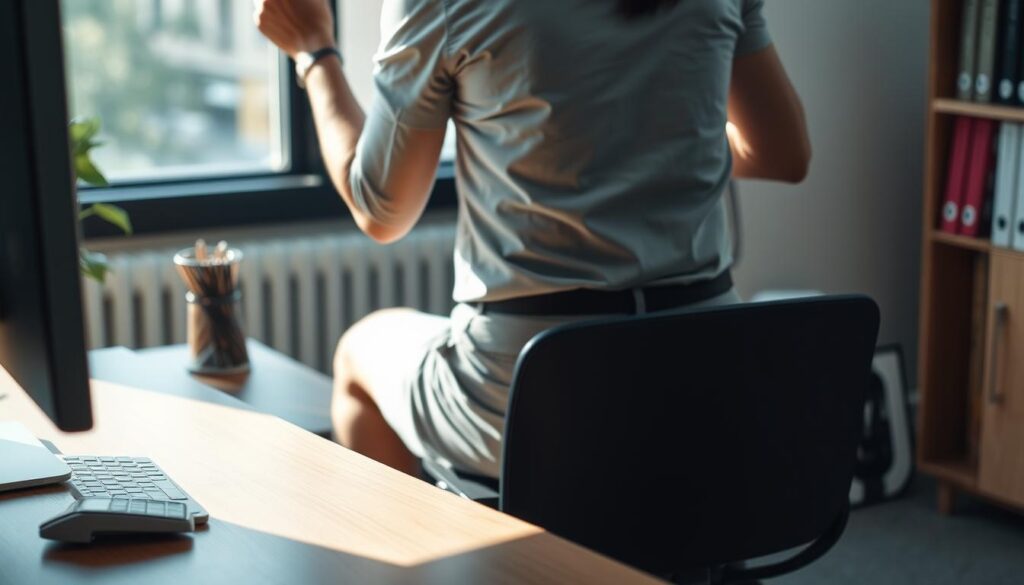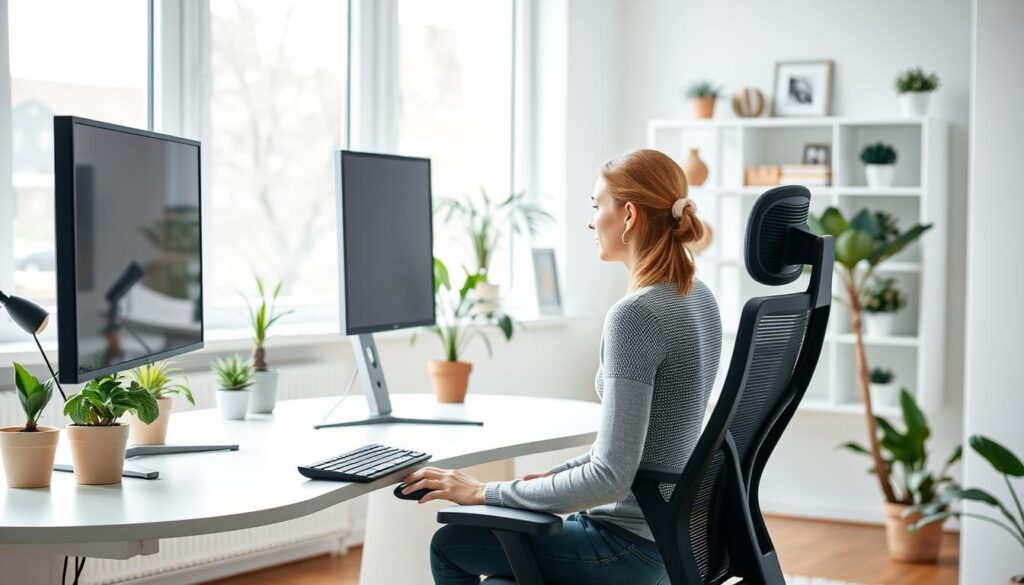Experiencing pain behind your knee when bending and straightening your leg can significantly impact your daily activities. This specific type of discomfort, known as posterior knee pain, can make simple movements like walking up stairs, getting out of a chair, or even sleeping comfortably challenging. Whether the pain appears suddenly after an injury or develops gradually over time, understanding its causes is the first step toward finding relief.
Posterior knee pain occurs in the popliteal area—the space at the back of your knee joint. This region contains various structures including muscles, tendons, ligaments, blood vessels, and nerves. When you bend or straighten your knee, these structures move and interact. If any component is damaged or inflamed, the normal movement pattern becomes painful, often worsening with continued activity.
Common Causes of Knee Pain Behind Knee When Bending And Straightening
Several conditions can cause pain behind the knee when bending and straightening. Understanding these potential causes can help you identify your specific issue and seek appropriate treatment.
Baker’s Cyst
A Baker’s cyst (also called a popliteal cyst) is a fluid-filled sac that forms behind the knee. It develops when synovial fluid—which normally lubricates the knee joint—builds up and creates a bulge in the back of the knee.
Key Symptoms of Baker’s Cyst:
- Swelling behind the knee that may increase with activity
- Tightness or stiffness when fully bending or straightening the leg
- Feeling of pressure in the back of the knee
- Sharp pain if the cyst bursts
Baker’s cysts often develop due to underlying knee problems like arthritis or meniscus tears. They’re more common in middle-aged and older adults, particularly those with existing joint conditions.
Meniscus Tears
The meniscus is a C-shaped piece of cartilage that cushions your knee joint. Each knee has two menisci that act as shock absorbers between your thigh bone (femur) and shin bone (tibia). Tears can occur during activities that involve twisting or rotating the knee, especially when putting your full weight on it.
Key Symptoms of Meniscus Tears:
- A “popping” sensation at the time of injury
- Pain that worsens when twisting or rotating the knee
- Difficulty fully straightening the knee
- Feeling of the knee “locking” or “giving way”
- Swelling that develops over 24-48 hours
Meniscus tears are common in athletes but can also occur in older adults due to cartilage degeneration. Even everyday activities like squatting can cause tears in weakened menisci.
Hamstring Tendonitis
The hamstrings are a group of three muscles that run down the back of your thigh. Tendonitis occurs when the tendons connecting these muscles to bones become inflamed or irritated, often due to overuse or sudden increases in activity level.
Key Symptoms of Hamstring Tendonitis:
- Pain in the back of the knee that worsens with activity
- Tenderness when touching the affected area
- Pain when bending the knee against resistance
- Swelling and warmth around the tendon
Athletes in sports requiring sprinting or jumping are particularly susceptible to hamstring tendonitis. Poor flexibility, muscle imbalances, and inadequate warm-up can increase risk.
ACL and PCL Injuries
The anterior cruciate ligament (ACL) and posterior cruciate ligament (PCL) are crucial stabilizers of the knee joint. While ACL injuries typically cause pain at the front of the knee, PCL injuries often result in posterior knee pain when bending and straightening.
Key Symptoms of PCL Injuries:
- Pain behind the knee that worsens when walking downhill or stairs
- Swelling within hours of injury
- Instability when bearing weight
- Difficulty fully bending the knee
PCL injuries often result from a direct blow to the front of the knee while it’s bent, such as in a car accident or during contact sports. They can also occur from hyperextending the knee or missing a step when walking.
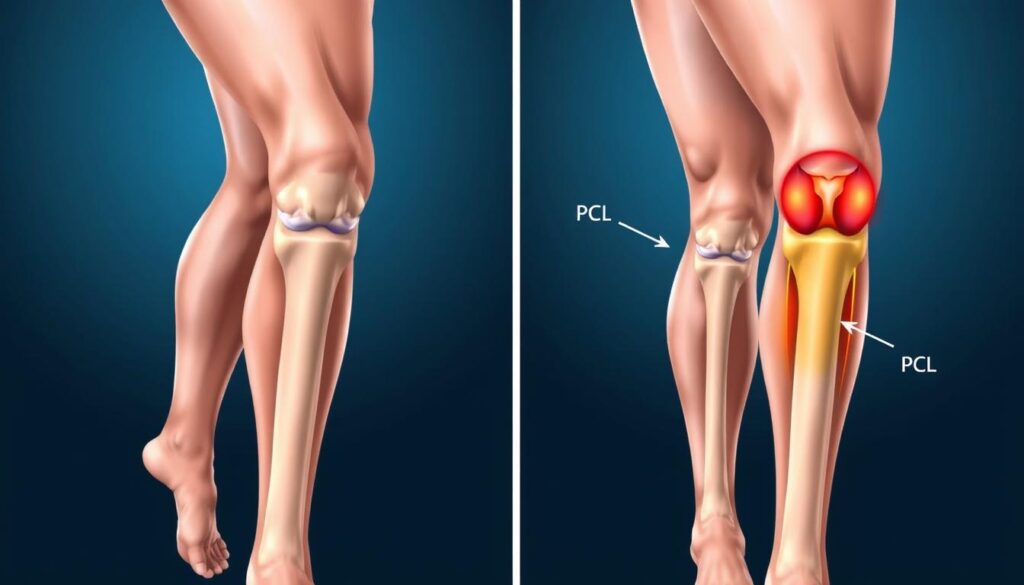
Arthritis
Several forms of arthritis can cause pain behind the knee when bending and straightening, including osteoarthritis, rheumatoid arthritis, and psoriatic arthritis. Osteoarthritis is the most common, resulting from wear and tear on the joint over time.
Key Symptoms of Knee Arthritis:
- Pain that increases with activity and improves with rest
- Morning stiffness that improves after movement
- Grinding or crackling sounds (crepitus) with movement
- Decreased range of motion over time
- Swelling after extended activity
Risk factors for knee arthritis include age, previous joint injuries, obesity, and family history. Women and people over 45 are more likely to develop osteoarthritis of the knee.
Experiencing Persistent Knee Pain?
If you’ve been dealing with pain behind your knee when bending and straightening, our specialists can help identify the cause and develop a personalized treatment plan.
Diagnosing the Cause of Posterior Knee Pain
Proper diagnosis is essential for effective treatment of knee pain behind the knee when bending and straightening. Healthcare providers use several methods to determine the underlying cause.
Physical Examination
During a physical exam, your doctor will assess your knee’s range of motion, stability, and the location of pain. They may perform specific tests to check for meniscus tears, ligament injuries, or other conditions. For example, the McMurray test involves rotating the tibia while the knee is bent and then straightened to check for meniscus tears.
Imaging Tests
Various imaging techniques help visualize the structures inside and around your knee:
X-rays
While X-rays don’t show soft tissues like cartilage and ligaments, they can reveal bone spurs, joint space narrowing, and other signs of arthritis or fractures.
MRI (Magnetic Resonance Imaging)
MRIs provide detailed images of soft tissues, making them excellent for diagnosing meniscus tears, ligament injuries, and Baker’s cysts.
Ultrasound
This non-invasive test uses sound waves to create images and is particularly useful for visualizing Baker’s cysts and tendon injuries.
CT Scan
CT scans may be used to examine complex fractures or other bone abnormalities that could contribute to posterior knee pain.
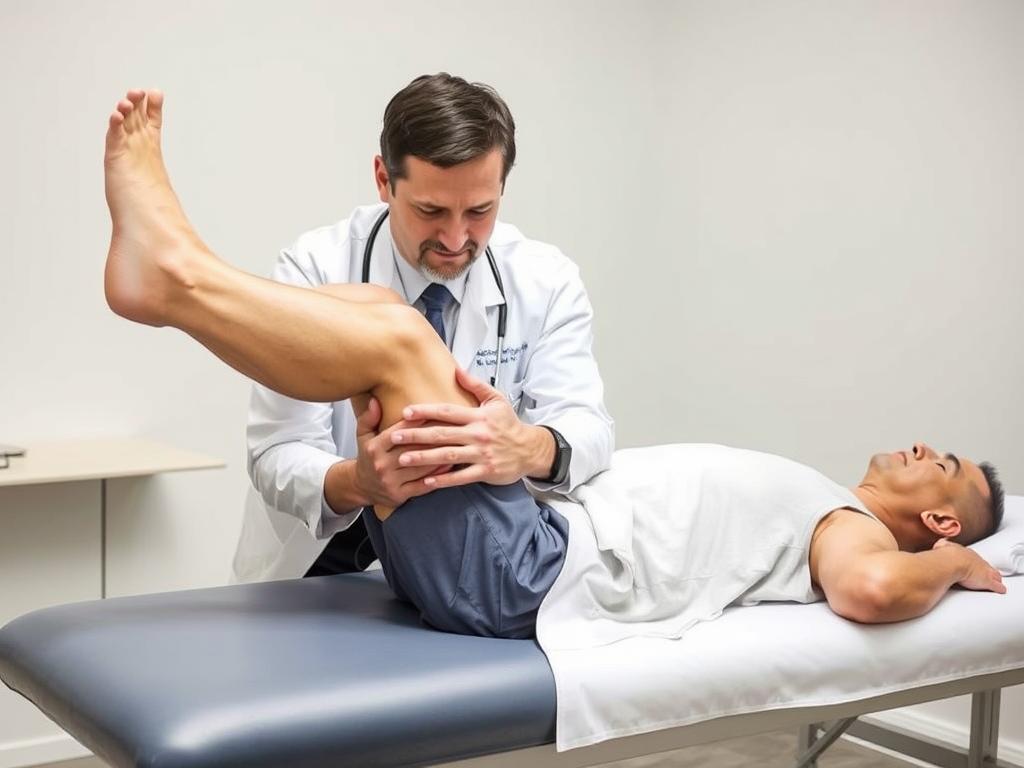
Additional Diagnostic Procedures
In some cases, your doctor may recommend additional tests:
- Aspiration: Removing and analyzing fluid from the knee joint can help diagnose infection or inflammatory conditions.
- Blood tests: These can identify markers of inflammation or autoimmune conditions like rheumatoid arthritis.
- Arthroscopy: This minimally invasive surgical procedure allows doctors to look inside the knee joint using a small camera, which can both diagnose and treat certain conditions.
Treatment Options for Knee Pain Behind Knee When Bending And Straightening
Treatment approaches vary depending on the underlying cause of your posterior knee pain. Many conditions respond well to conservative treatments, while others may require more intensive interventions.
Conservative Treatments
RICE Method
The RICE protocol is often the first line of treatment for many knee injuries:
- Rest: Avoid activities that cause pain and give your knee time to heal.
- Ice: Apply ice packs for 15-20 minutes several times daily to reduce inflammation.
- Compression: Use an elastic bandage to provide support and reduce swelling.
- Elevation: Keep your leg raised above heart level when possible to minimize swelling.
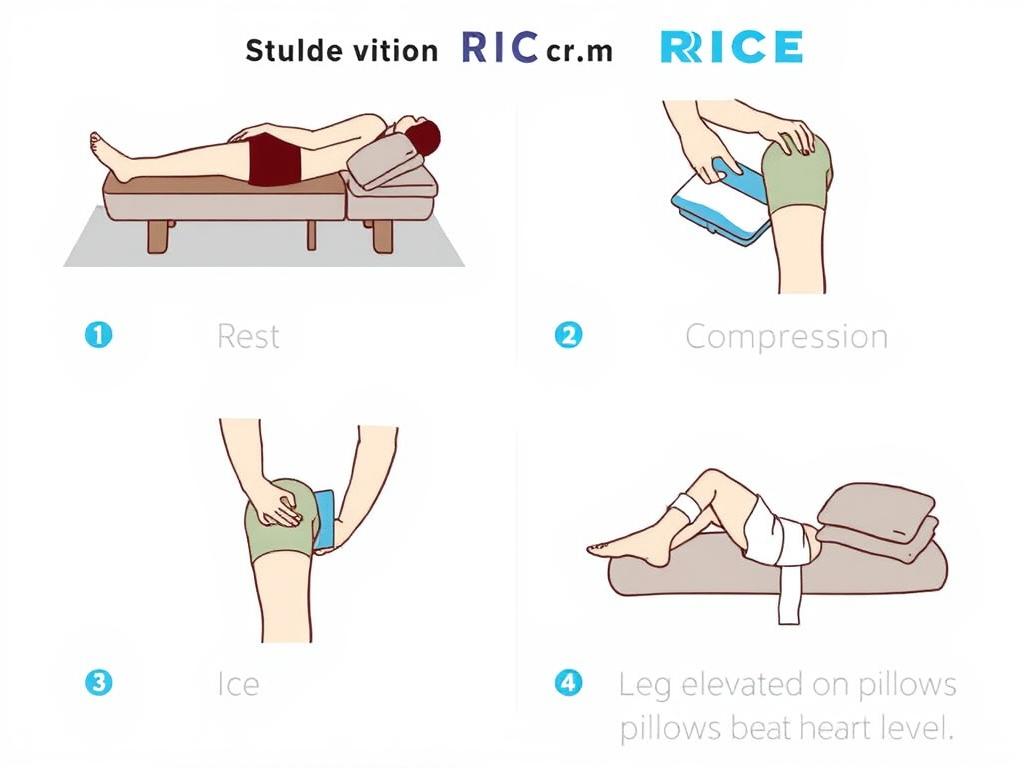
Medications
Several types of medications can help manage pain and inflammation:
- NSAIDs: Non-steroidal anti-inflammatory drugs like ibuprofen or naproxen reduce pain and swelling.
- Acetaminophen: Helps with pain management but doesn’t reduce inflammation.
- Topical medications: Creams or gels containing NSAIDs or other pain-relieving compounds can be applied directly to the affected area.
Physical Therapy
A physical therapist can design a program to strengthen the muscles supporting your knee, improve flexibility, and restore proper movement patterns. Common exercises include:
Hamstring Stretches
Gently stretching tight hamstrings can relieve pressure on the back of the knee.
Quadriceps Strengthening
Strong quads help stabilize the knee joint and improve patellar tracking.
Balance Exercises
Improving proprioception helps prevent future injuries and instability.
Low-Impact Cardio
Activities like swimming or cycling maintain fitness without stressing the knee.
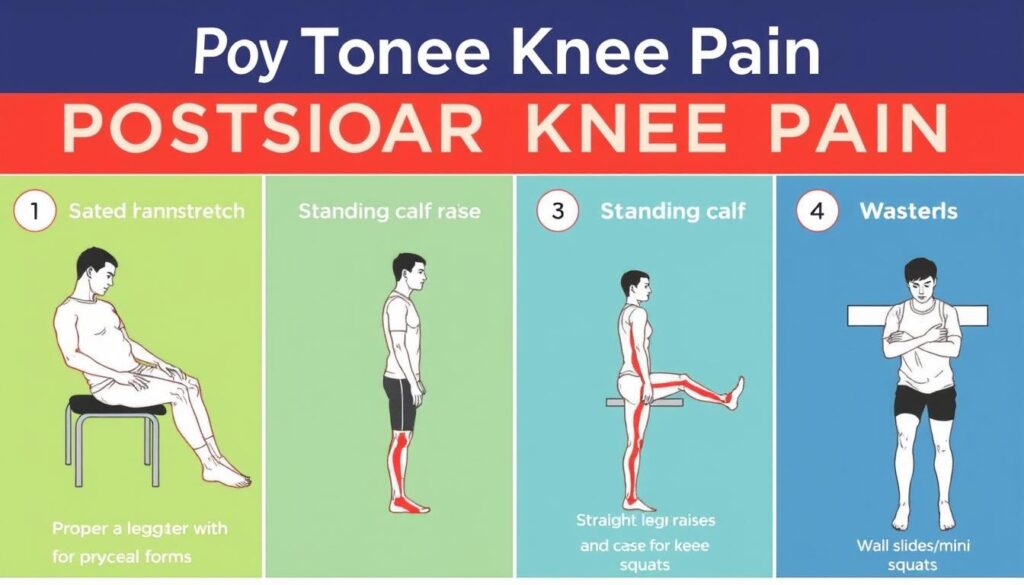
Medical Interventions
Injections
When conservative treatments aren’t providing adequate relief, your doctor might recommend:
- Corticosteroid injections: Reduce inflammation and provide temporary pain relief for conditions like arthritis or Baker’s cysts.
- Hyaluronic acid injections: Add cushioning fluid to the joint, particularly helpful for osteoarthritis.
- Platelet-rich plasma (PRP): Uses components from your own blood to potentially accelerate healing in tendons and other tissues.
Surgical Options
Surgery may be necessary for severe or persistent conditions:
- Arthroscopic repair: Minimally invasive surgery to repair meniscus tears or remove loose fragments.
- Ligament reconstruction: Rebuilding damaged ligaments like the PCL using tissue grafts.
- Baker’s cyst removal: Surgical excision of a problematic cyst that doesn’t respond to other treatments.
- Partial or total knee replacement: For severe arthritis that significantly impacts quality of life.
Need a Personalized Treatment Plan?
Our orthopedic specialists can evaluate your knee pain and recommend the most effective treatment options for your specific condition.
Prevention Tips for Knee Pain Behind Knee When Bending And Straightening
While not all causes of posterior knee pain are preventable, these strategies can help reduce your risk and maintain knee health.
Strengthening Exercises
Building strength in the muscles that support your knee joint is one of the most effective preventive measures:
- Quadriceps exercises: Strong front thigh muscles help stabilize the knee joint.
- Hamstring strengthening: Balanced strength between quads and hamstrings prevents strain.
- Core stability work: A strong core improves overall body mechanics and reduces knee stress.
- Hip strengthening: Strong hip muscles, especially the gluteus medius, improve knee alignment during movement.
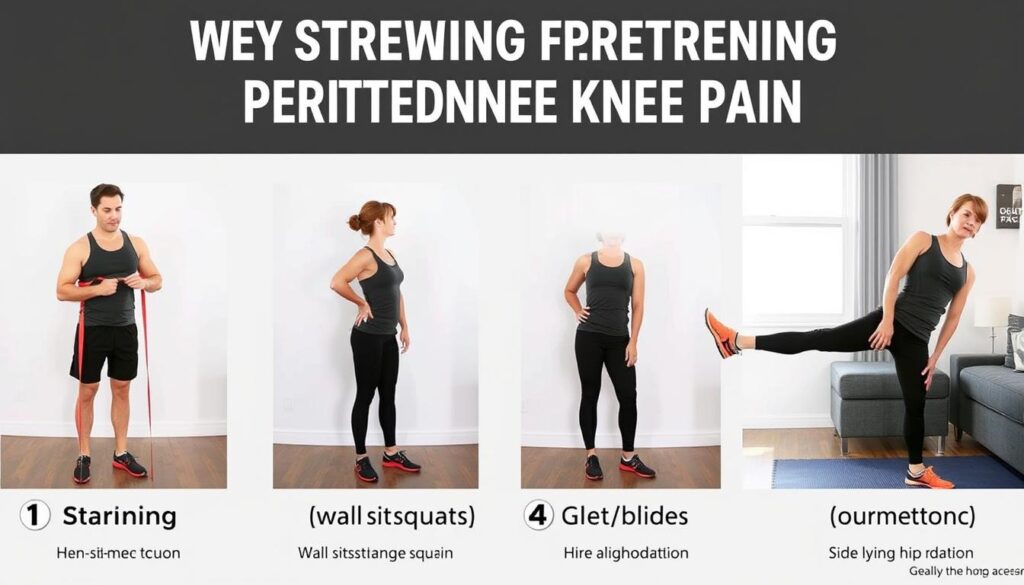
Proper Warm-Up Routines
Always prepare your body before physical activity:
- Spend 5-10 minutes on light cardio to increase blood flow to muscles and joints.
- Perform dynamic stretches that mimic the movements of your planned activity.
- Gradually increase intensity rather than jumping straight into vigorous exercise.
- Include specific knee mobility exercises like gentle knee bends and leg swings.
Ergonomic Adjustments
Making changes to your daily environment and habits can significantly reduce knee strain:
Workplace Modifications
- Use an ergonomic chair that supports proper posture
- Ensure feet are flat on the floor when sitting
- Take regular breaks from prolonged sitting
Home Adjustments
- Install handrails on stairs if needed
- Use a shower bench if standing causes pain
- Consider raised toilet seats to reduce deep knee bending
Lifestyle Modifications
Overall health habits play a crucial role in knee health:
- Maintain a healthy weight: Extra pounds significantly increase stress on knee joints.
- Choose low-impact activities: Swimming, cycling, and elliptical training are gentler on knees than running or jumping.
- Wear proper footwear: Supportive shoes with good cushioning reduce impact forces transmitted to knees.
- Stay hydrated: Proper hydration helps maintain the health of cartilage and other joint tissues.
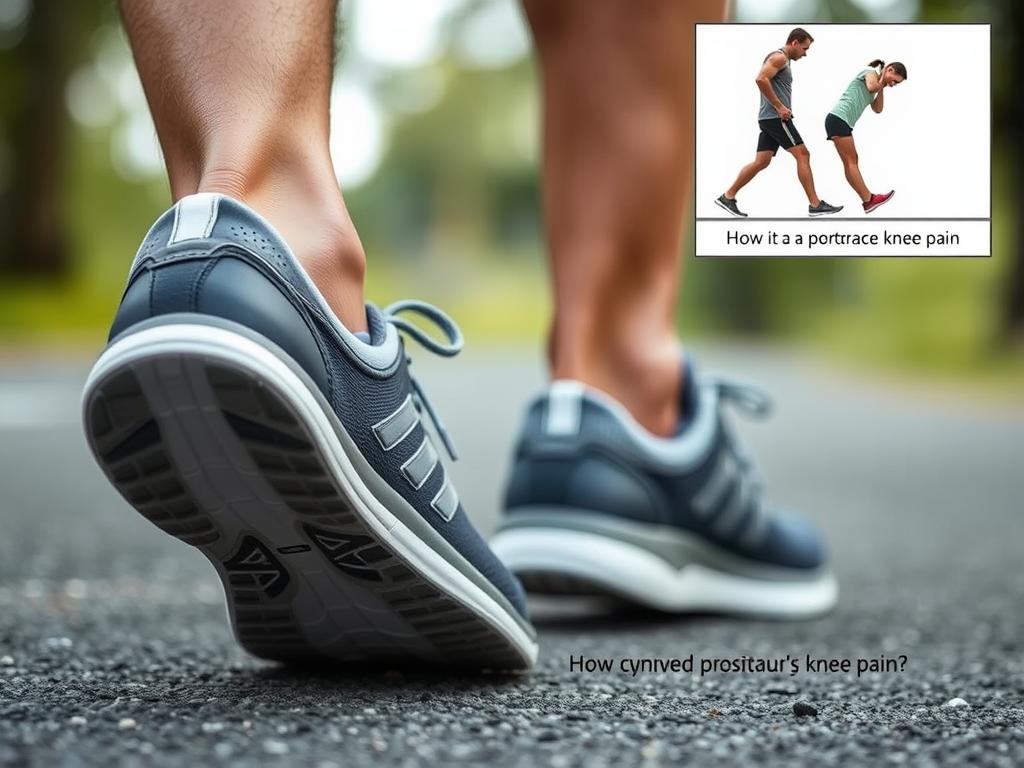
When to See a Doctor for Knee Pain Behind Knee When Bending And Straightening
While some mild knee discomfort may resolve with home care, certain symptoms warrant prompt medical attention.
Seek Immediate Medical Care If You Experience:
- Severe pain that prevents you from bearing weight on the affected leg
- Significant swelling that develops rapidly (within a few hours)
- Visible deformity of the knee joint
- Inability to bend or straighten the knee
- Fever accompanied by knee pain and redness (possible infection)
- Symptoms of a blood clot: warmth, redness, and swelling in the calf
Additionally, schedule an appointment with your healthcare provider if you experience:
- Pain that persists for more than a few days despite rest and over-the-counter pain relievers
- Recurrent swelling around the knee joint
- Instability or a feeling that your knee might “give way”
- Clicking, popping, or grinding sensations accompanied by pain
- Pain that interferes with sleep or daily activities
- Any knee symptoms that worsen rather than improve with time
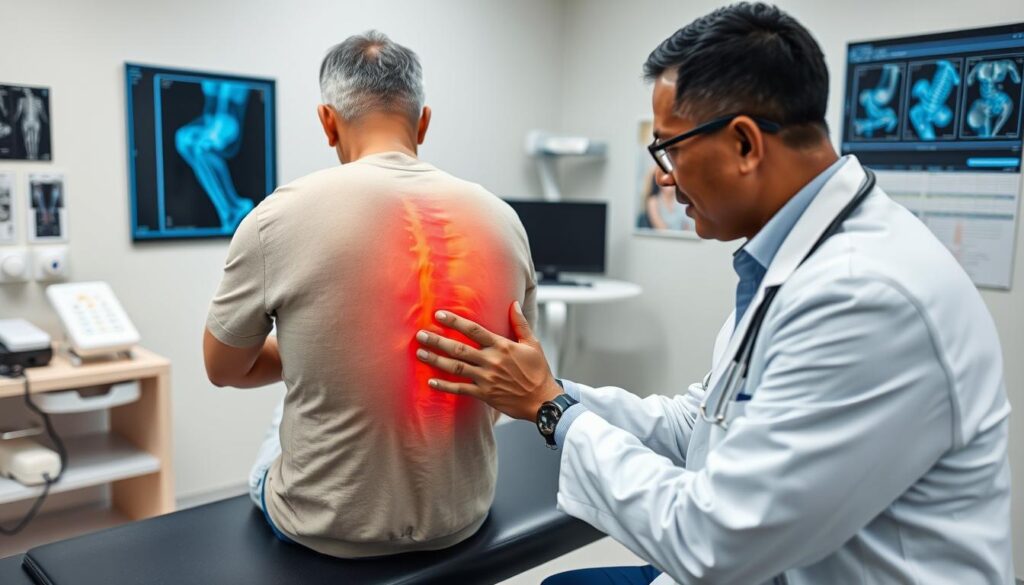
Early intervention often leads to better outcomes and can prevent chronic issues from developing. Your doctor can provide an accurate diagnosis and create a treatment plan tailored to your specific condition.
Frequently Asked Questions About Knee Pain Behind Knee When Bending And Straightening
Is walking good for knee pain behind the knee?
Walking can be beneficial for some types of posterior knee pain, particularly those related to arthritis or muscle weakness. Low-impact walking helps maintain joint mobility, strengthens supporting muscles, and improves circulation to aid healing. However, if walking increases your pain, causes swelling, or leads to limping, it may be too strenuous for your current condition.
Start with short, gentle walks on level surfaces and gradually increase duration as tolerated. Using proper footwear with good support and cushioning is essential. For acute injuries or severe pain, rest may be more appropriate initially. Always follow your healthcare provider’s specific recommendations for your condition.
Can pain behind the knee when bending and straightening go away on its own?
Some causes of posterior knee pain may resolve without medical intervention, particularly minor strains or overuse injuries. Implementing the RICE protocol (rest, ice, compression, elevation) and temporarily modifying activities often allows these conditions to heal naturally within a few days to weeks.
However, many underlying causes—such as meniscus tears, Baker’s cysts, or arthritis—typically require proper diagnosis and treatment. Even if pain subsides temporarily, the underlying issue may persist and lead to recurring problems or further damage if left untreated. If pain persists beyond 1-2 weeks despite home care, or if it’s accompanied by swelling, instability, or limited range of motion, medical evaluation is recommended.
What’s the difference between pain behind the knee and pain in other areas of the knee?
The location of knee pain provides important diagnostic clues. Pain behind the knee (posterior) typically suggests different conditions than pain in the front (anterior), sides (medial/lateral), or throughout the joint:
- Posterior knee pain: Often related to Baker’s cysts, hamstring tendonitis, PCL injuries, or popliteal artery entrapment.
- Anterior knee pain: Commonly associated with patellofemoral pain syndrome, patellar tendonitis, or quadriceps tendonitis.
- Medial (inner) knee pain: Frequently due to MCL injuries, medial meniscus tears, or pes anserine bursitis.
- Lateral (outer) knee pain: Often caused by LCL injuries, IT band syndrome, or lateral meniscus tears.
While some conditions like osteoarthritis can cause pain throughout the joint, the specific location helps healthcare providers narrow down potential causes and direct appropriate treatment.
Can exercises make knee pain behind the knee worse?
Yes, certain exercises can exacerbate posterior knee pain, especially if performed incorrectly or if they’re inappropriate for your specific condition. Exercises that may worsen pain behind the knee include:
- Deep squats or lunges that place excessive pressure on the knee joint
- High-impact activities like running or jumping, particularly on hard surfaces
- Leg extensions with heavy weights that strain the knee joint
- Exercises that involve forced hyperextension of the knee
The key is to work with a physical therapist or qualified fitness professional who can design an appropriate exercise program based on your specific diagnosis. Proper form, gradual progression, and selecting the right type of exercises are essential for healing rather than harming your knee.
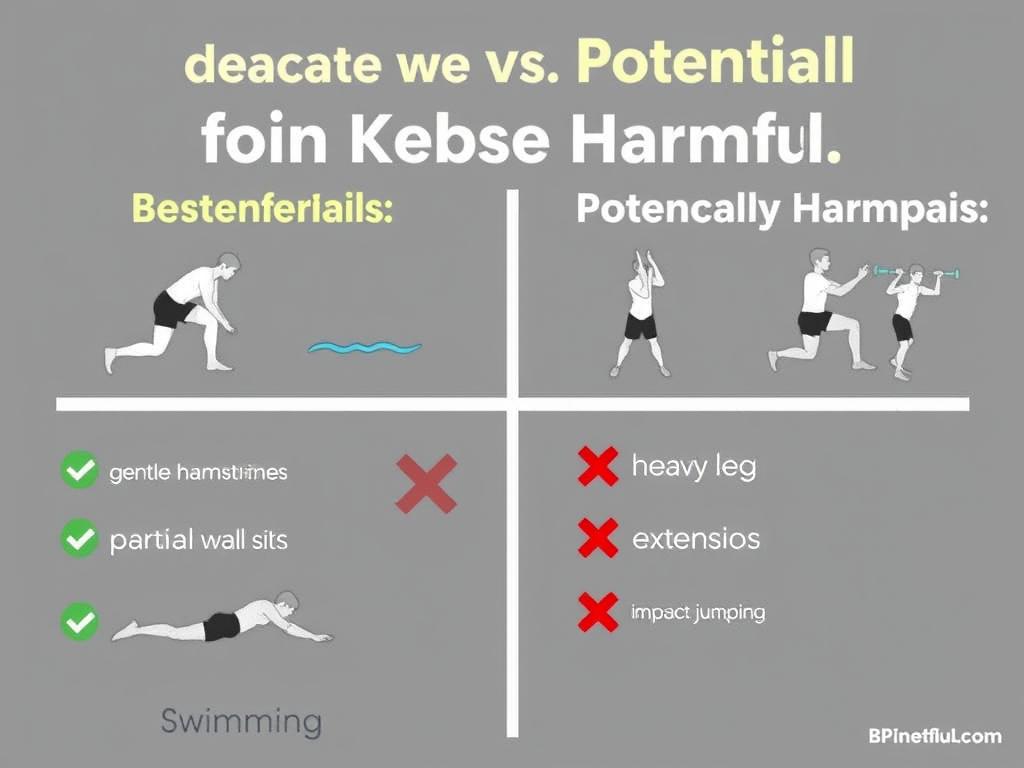
Conclusion
Knee pain behind the knee when bending and straightening can significantly impact your quality of life, but understanding its causes is the first step toward finding relief. Whether you’re dealing with a Baker’s cyst, meniscus tear, tendonitis, ligament injury, or arthritis, proper diagnosis and treatment are essential for recovery.
Many cases of posterior knee pain respond well to conservative measures like the RICE method, physical therapy, and appropriate medications. For more severe or persistent conditions, medical interventions including injections or surgery may be necessary. Regardless of the cause, early intervention typically leads to better outcomes and can prevent chronic issues from developing.
By incorporating preventive strategies—such as strengthening exercises, proper warm-up routines, and ergonomic adjustments—you can reduce your risk of future knee problems. Remember to listen to your body and seek medical attention when warning signs appear, particularly severe pain, significant swelling, or instability.
Don’t Let Knee Pain Limit Your Life
Our orthopedic specialists can help diagnose and treat the cause of your posterior knee pain, getting you back to the activities you enjoy.


